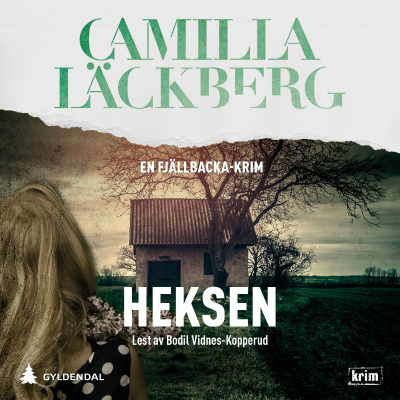The Decarbonization Race
Podkast av Cleartrace
It's not enough to think about what it takes to be more sustainable. Now is the time to act. The question is, who will lead the pack in saving our planet*, and what do they need to stay on track and honest with their goals? The Decarbonization Race is a show for ESG and sustainability leaders ready to go beyond 100% renewable, beyond the bare minimum, and truly make an impact. Join host Lincoln Payton, CEO of Cleartrace, and a passionate executive leader with over a decade of experience in the energy sector. He explores what organizations are doing around the globe to set the pace for true net zero leadership.
Prøv gratis i 7 dager
99,00 kr / Måned etter prøveperioden.Avslutt når som helst.
Alle episoder
42 EpisoderNuclear energy is facing a marked uptick in private investment over the next five years, spurred by the escalating demand for clean energy and energy security. Both governments’ and the private sector's net-zero ambitions are driving significant interest in high-growth energy areas like nuclear energy. Further, according to the International Energy Agency, existing nuclear plants make up a large part of global energy production today - representing nearly 10% of global energy production and nearly 20% in advanced countries. The further growth of nuclear power is becoming critical to the decarbonization of the electricity grid and the growing market for emissions-free energy. In this episode, host Lincoln Payton brings together a panel from investment giant Brookfield Corporation to explore the transformative role that nuclear energy plays in the pursuit of a net-zero future, particularly in the private sector investment landscape. Joining Lincoln for this episode are Pramod Shukla, Managing Director in Brookfield’s Private Equity Group; Sam Meyers, Senior Vice President at Brookfield Asset Management; and Mike Daschle, SVP of Sustainability for Brookfield Properties. The discussion spans the intricate considerations around nuclear power investments, the ability of nuclear power to meet the world’s growing energy demands, and the role of companies like Westinghouse within the broader nuclear industry. A projected and insightful outlook on nuclear energy, Lincoln and the panel acknowledge its significance and the expected evolution of investments and deployments over the next five years. Key Takeaways: 1. Clean power is on the rise: the world is turning to nuclear energy as a critical tool for decarbonization, as this clean energy source offers a vital solution for achieving net-zero emissions goals. 2. Gigawatt-scale giants lead the way: while smaller modular reactors (SMRs) hold immense potential for future deployments, their development remains in its early stages, meaning that larger, gigawatt-scale plants will likely dominate the energy landscape for the next decade. 3. Public sentiment shifting in favor: public opinion toward nuclear power is undergoing a positive shift with growth in bipartisan support in the USA coupled with the urgency of climate action and the need for clean energy solutions, all of which paint a promising picture for the future of nuclear power. Resources: * IAEA's revisions up of projected nuclear buildout by 2050: https://www.iaea.org/newscenter/pressreleases/iaea-annual-projections-rise-again-as-countries-turn-to-nuclear-for-energy-security-and-climate-action [https://www.iaea.org/newscenter/pressreleases/iaea-annual-projections-rise-again-as-countries-turn-to-nuclear-for-energy-security-and-climate-action] * Energy Monitor on SMRs: https://www.energymonitor.ai/sectors/power/small-modular-reactors-smrs-what-is-taking-so-long/?cf-view [https://www.energymonitor.ai/sectors/power/small-modular-reactors-smrs-what-is-taking-so-long/?cf-view] * Bipartisan support in the U.S. is up significantly compared to polling in 2020: https://www.pewresearch.org/short-reads/2023/08/18/growing-share-of-americans-favor-more-nuclear-power/sr_23-08-18_nuclear-energy_1/ [https://www.pewresearch.org/short-reads/2023/08/18/growing-share-of-americans-favor-more-nuclear-power/sr_23-08-18_nuclear-energy_1/]
Following a riveting conversation with Killian Daly of EnergyTag about hourly matching in carbon accounting, this Energy Minute looks at the work of the Emissions First partnership - a group of companies including Akamai, Meta, General Motors and Salesforce - and its collective focus on carbon matching in clean energy procurement. Cleartrace’s Steven Goldman [https://www.linkedin.com/in/stevenjgoldman/] delves into the difference between hourly matching and carbon matching approaches, and what principles the partnership members are applying in their work. He also explores the evolution from traditional electricity purchasing strategies and discusses how aligning with this approach might boost companies' carbon impacts of their energy procurement. Key Takeaways: 1. The Emissions First partnership seeks to maximize greenhouse gas emission reductions from the electricity system through corporate action. This includes prioritizing decarbonization, valuing grid decarbonization progress, incentivizing innovation in the emissions data ecosystem, and implementing accounting governance. 2. The coalition aims to source energy based on emissionality, focusing on the marginal carbon impact of each procurement rather than matching based on timing or which grid or market the energy is sourced in. Instead, they encourage companies to schedule electric loads around system signals like high marginal greenhouse gas emissions. 3. This approach signifies an evolution from traditional electricity purchasing strategies based on price or annual matching while providing flexibility for energy procurement teams to source for the greatest - while still feasible - marginal carbon impact. Resources: * Emissions First Partnership: https://www.emissionsfirst.com/ [https://www.emissionsfirst.com/]
Decarbonization has diversified from simply vanilla to 31 flavors, where a range of goals and strategies are being adopted as companies work to reduce carbon emissions and other environmental impacts. One key strategy that’s emerged has been time-matched procurement of electricity, ensuring that the electricity that’s sourced corresponds to when and how much electricity is used onsite. Granular energy attribute certificates (EACs), which add transparency by including information on where and when energy is sourced, are crucial to delivering 24/7 carbon-free energy matched on the hour. On this episode, host Lincoln Peyton talks with EnergyTag Executive Director Killian Daly [https://www.linkedin.com/in/killianpdaly/] about how the organization is leading the charge for granular certificates, including advising governments around the world on their use and how they can ensure commodities like hydrogen are produced sustainably. They also discuss the complex world of voluntary standards, market impacts, policy implementation, and the ambitious mission of EnergyTag, which is backed by big names like Google and Microsoft. As EnergyTag champions global adoption of more granular carbon accounting standards, Killian will also shines a light on his role in harmonizing these efforts through leading the Carbon Data Specification initiative at the Linux Foundation. Key Takeaways: 1. Granular data is key to transparency and accountability: by supplying information on when energy is generated, granular data enables organizations to better match the energy they source with consumption, better ensuring companies decarbonization efforts’ deliver the desired impacts. 2. Education leads to action: regulatory measures, such as the push for renewable hydrogen in Europe, will help suppliers shape how they source energy and produce commodities like hydrogen, chemicals and steel. Clear definitions of 'green' and enforceable standards can safeguard against inefficacy or greenwashing of products. 3. Strategic advantages of sustainable practices: There is a competitive edge companies gain by committing to sustainable practices — from price stability in energy markets to consumer trust in green certification. Going beyond the rhetoric of corporate responsibility, Killian articulates the tangible benefits of embedding sustainability into business models. Resources: * Learn more about EnergyTag: https://energytag.org/ [https://energytag.org/] * Case studies of granular certificate use: https://energytag.org/case_studies/ [https://energytag.org/case_studies/] * The Granular Certificate Standard: https://energytag.org/standards/ [https://energytag.org/standards/] * Canary Media’s series on the green hydrogen debate: https://www.canarymedia.com/articles/hydrogen/the-great-green-hydrogen-battle
Investing in infrastructure is different and more complex than many other investment classes, often involving significantly longer timeframes and larger capital expenditures. Investing in sustainable infrastructure — like renewable energy, energy storage, or electric vehicle fleets — can be attractive to investors but adds complexity and often requires delivering with newer technologies. Generate Capital [https://generatecapital.com/] was founded in 2014 with an unusual approach: invest, operate and maintain a range of sustainable infrastructure assets for the long term — creating “sustainable infrastructure as a service” — that can provide extended value to investors and customers while yielding lasting environmental, social, and economic benefits. Nam Nguyen [https://www.linkedin.com/in/nam-tran-nguyen-b692011/], Chief Operating Officer of Generate Capital and a visionary leader in the clean energy sector, joins Lincoln on the podcast to talk about how she and Generate Capital’s team are creating long-term impacts with strategic investments in the sustainable energy, e-mobility, waste and smart cities sectors. Key Takeaways: 1. When Generate examines an investment opportunity, they view it through the lens of a long-term asset owner, looking at impacts and returns across 20, 30, or 40 years. Therefore, when looking at the opportunities, they are also looking for drivers that are going to factor in for the long term. In addition, they are looking at how to optimize assets and facilities so that they are lasting for a long time. 2. Generate’s investment strategy isn’t limited to clean energy. Part of their portfolio is a platform called Generate Upcycle, which is focused on the circular economy—keeping waste streams out of landfills, and turning that waste into something more renewable, whether it's in the form of renewable electricity, renewable natural gas, compost or other uses. 3. Generate’s team has a problem-solving mindset, because markets change quickly and the world is always evolving. Because of this, Generate’s team look at issues, like grid instability in California, and regularly sit down with the company’s partners to ask, “how do we solve for this? How do we change the way we utilize the assets we’ve built to address fresh concerns? How do we optimize portfolios in different parts of our customer base?”
On this Energy Minute mini-sode, Steven Goldman explores the world of “green tariffs,” voluntary utility programs that enable eligible customers to buy the “bundled” energy and associated Renewable Energy Certificates (RECs) from renewable energy projects. These programs are typically offered by local electric utilities and approved by state public utility commissions (PUCs). He explains the main types of green tariffs and how they are an important tool for companies seeking to procure clean energy, as they offer a number of benefits, including predictability, reduced upfront costs, and brokerless access to clean energy. We'll discover the benefits of participating in these programs, including access to clean energy without high upfront costs and the ability to reduce operational carbon emissions. Join us as we uncover some of the more innovative green tariff programs and how utilities are working towards meeting the needs of companies in their clean energy sourcing. Key Takeaways: 1. Green tariffs are voluntary utility programs that enable eligible customers to buy green power - both the energy and the associated RECs - generated by renewable energy projects. They are more common in traditionally regulated electricity markets and are an avenue for companies to source clean energy without having to pursue a bilateral agreement with a power producer. 2. There are three main types of green tariffs: subscription programs, sleeved power purchase agreements (PPAs), and market-based rate programs. 3. Green tariffs offer several benefits, including predictability, reduced upfront costs, and brokerless access to clean energy. As of January 2023, there are 50 approved or pending green tariff programs offered by 40 utilities in 28 states. References: * CEBA’s Green Tariffs report (updated in Jan 2023): https://cebuyers.org/solutions/procure-clean-energy/green-tariffs/#:~:text=Green%20tariffs%20are%20voluntary%20utility,a%20customer's%20current%20electricity%20bill [https://cebuyers.org/solutions/procure-clean-energy/green-tariffs/#:~:text=Green%20tariffs%20are%20voluntary%20utility,a%20customer's%20current%20electricity%20bill] * EPA primer on Green Tariffs: https://www.epa.gov/green-power-markets/utility-green-tariffs#:~:text=Utility%20green%20tariffs%20are%20optional,a%20special%20utility%20tariff%20rate [https://www.epa.gov/green-power-markets/utility-green-tariffs#:~:text=Utility%20green%20tariffs%20are%20optional,a%20special%20utility%20tariff%20rate] * S&P Global, “Utility green tariffs fuel growth in US corporate renewables market” : https://www.spglobal.com/marketintelligence/en/news-insights/research/utility-green-tariffs-fuel-growth-in-us-corporate-renewables-market [https://www.spglobal.com/marketintelligence/en/news-insights/research/utility-green-tariffs-fuel-growth-in-us-corporate-renewables-market]
Prøv gratis i 7 dager
99,00 kr / Måned etter prøveperioden.Avslutt når som helst.
Eksklusive podkaster
Uten reklame
Gratis podkaster
Lydbøker
20 timer i måneden



















